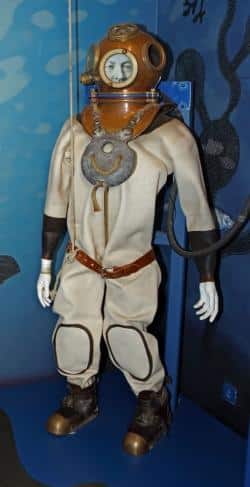When he wrote Extraordinary Voyages, subtitled Worlds Known and Unknown, Jules Verne drew inspiration from real stories of travels around the world, whose geographical and scientific contributions served as a basis for his novels.
In order to fulfil the encyclopaedic goals set by his publisher Hetzel and in direct resonance with the “universal geographies” produced over the course of the 19th century, Verne drew much of his inspiration from the bulletins published by the Paris Geographical Society, of which he was a member for over thirty years. Reading the learned society’s articles nourished the author’s imagination and provided him with a regular source of viable material. There can be no doubt that it also influenced his opinions: by supplying so much useful knowledge, the Geographical Society served the French colonial enterprise’s ambitions and encouraged exploration and then exploitation of the Earth. This vision of the world, based on appropriation of knowledge and territories, also reflects the blind spots of an era when colonial domination was seldom called into question in learned circles.
Curious and attentive to all the scientific publications of his day, the novelist was fascinated in particular by the Arago brothers’ exploration narratives and Elisée Reclus’ essay New Universal Geography. He assimilated the geographer’s works, enriching his own body of work with moral, political and philosophical considerations as a result while continuing to depict the world.
The Revue des Deux Mondes magazine and the Tour du Monde weekly travel journal were further sources of travellers’ tales that he also sometimes borrowed from. He soaked up the works he read so as to better turn them into novels and succeeded in interesting a wide audience in geography and contemporary discoveries.
His body of work accompanied the upheavals of a 19th century marked by a change in scale for humanity. Technological advances fostered world travel and mastery of distance and time led to a shift towards globalisation.
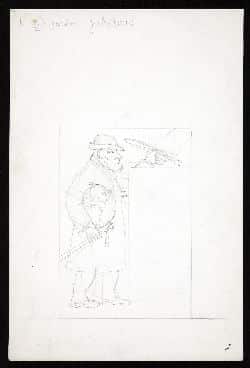
Jean Bruneau
Draft portrait of Jules Verne for a pack of cards
circa 1978
Pencil drawing on paper
MJV C579/07 (Donated by Jean-Michel Bruneau, 2021)
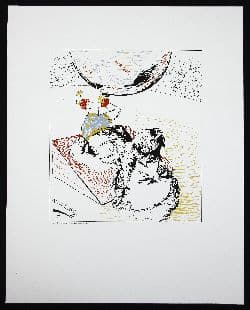
Alfred Le Petit
Jules Verne Spinning a Globe
Poster reproduced from a drawing created
for Le Charivari, 15 December 1874
MJV D961
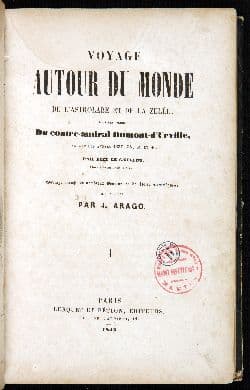
Élie Le Guillou and Jacques Arago
Journey around the World of the Astrolabe and the Zélée, under the Command of Rear Admiral Dumont d’Urville during the Years 1837, 38, 39 and 40
Berquet et Pétion, Paris, 1843
MJV A1104
This story of Jules Dumont d’Urville’s third circumnavigation of the globe was written by Élie Le Guillou, ship’s surgeon aboard the Zélée, with the help of the draughtsman Jacques Arago. The latter was also a geographer and explorer who had taken part in Captain Freycinet’s voyage round the world aboard the corvettes Uranie and Physicienne between 1817 and 1820.
Before he became a member of the Paris Geographical Society, Jules Verne had made the acquaintance of numerous well-known names who encouraged him to persevere in the field of writing. In 1851, he got to know the Arago brothers and was often in their company – Jacques in particular but also François, the famous astronomer and physicist, through whom he met explorers, geographers and scientists.
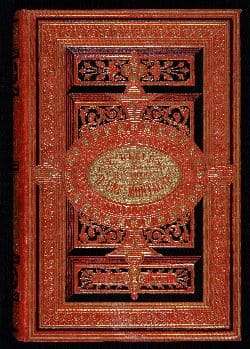
Élisée Reclus
The History of a Mountain
Éditions Hetzel, Paris, circa 1866
MJV A10
An independent geographer in an era when geography was not yet a fully-fledged academic discipline, Élisée Reclus was a tireless traveller and researcher. A writer with a style that was both elegant and popular, he was well known for his anarchist sympathies.
Geography, a science of interactions, was a liberating tool that Élisée Reclus succeeded in making extremely popular in his day. But his fame also had much to do with his aura, in an era when geography was initially associated with faraway lands and dreams, at the crossroads of science and imagination, as embodied so well by the writer Jules Verne, who was also very familiar with his works.
A libertarian and geographer, Élisée Reclus left a considerable body of work behind him, which now has major echoes today: ecology, analysis of colonisation, reflections on globalised capitalism and social inequalities – his human geography is impressively modern.
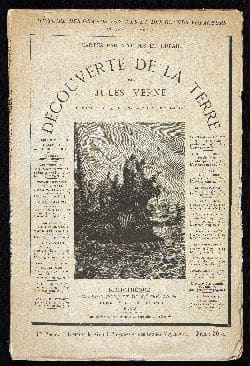
Jules Verne
The Great Navigators of the 18th century
Le Magasin d’éducation et de récréation, Paris, 1880
MJV A1125
This serialised prepublication in the pages of LeMagasin d’éducation et de récréation was a widely disseminated format.
Readers discovered the author’s work chapter by chapter.
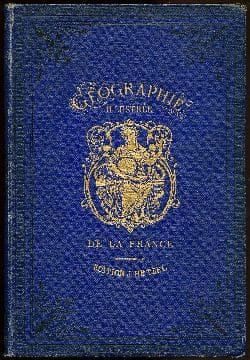
Jules Verne and Théophile Lavallée
Illustrated Geography of France and its Colonies
Éditions Hetzel, Paris, 1868
MJV A489
After a long introduction written by Théophile Lavallée and titled General Geography of France, Jules Verne provides details of every département, using the same headings for each of them: geographical, historical and descriptive.
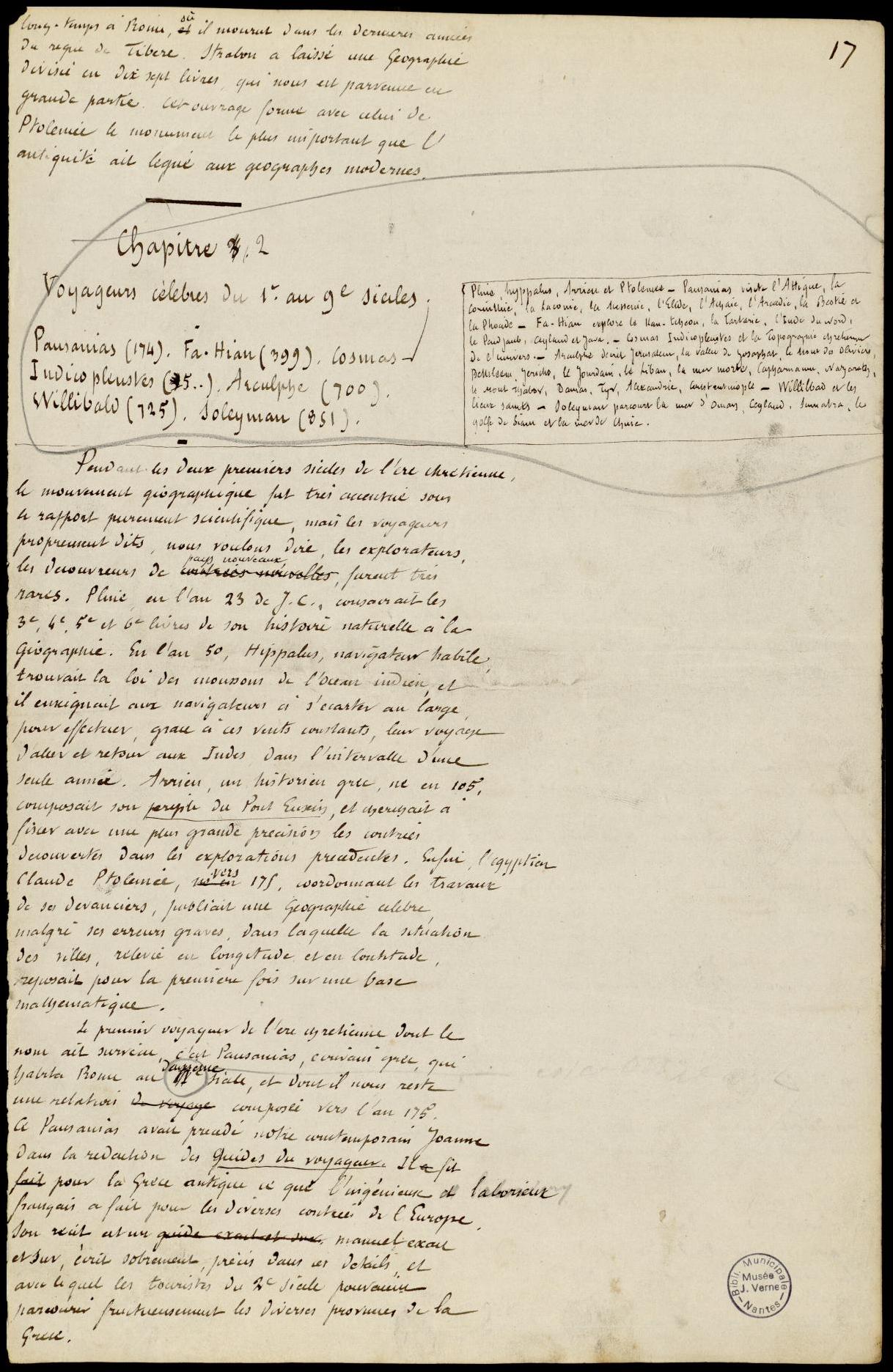
Jules Verne
History of Great Travels and Great Travellers, 1869
MJV B150 (exhibition print – Acquired with the support of the Pays de la Loire Region, the département of Loire-Atlantique and the Fondation de France)
On this sheet of paper, Jules Verne started on the 2nd chapter of his book, tracing the history of famous explorers and travellers from the 1st to the 9th century.
On the right of the page, he has made an exhaustive list of explorers and parts of the globe discovered or explored, and which he refers to in this chapter.
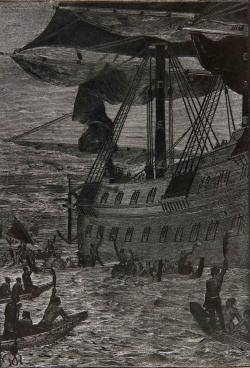
Jules Verne
History of Great Travels and Great Travellers
Woodblock matrices, circa 1879
MJV G349
The evolution of printing techniques led to images playing a greater role in the unfolding of a story. “End grain” woodblocks, which are cut perpendicularly to the direction of the wood grain and worked with a burin, provide very fine and highly detailed relief engravings.

Poul Steffensen
The Mysterious Island and
Captain Antifer
Drawings for a Danish edition, circa 1901
MJV C204
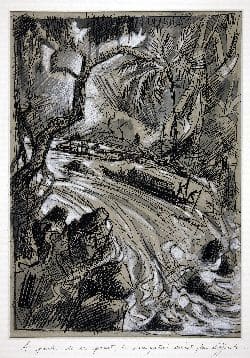
Daniel Maja
The Superb Orinoco
Ink, pencil, watercolour and pastels
on recycled paper, for the edition published by the Fundacion Julio Verne De Venezuela, 1997
MJV C557 (Purchased with the support of the Regional Acquisition Fund for Libraries, 2004)
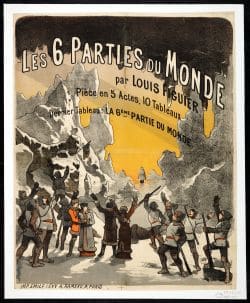
Louis Figuier
The Six Parts of the World
Lithographed poster, Paris, 1877
MJV D499
Titled The Six Parts of the World, Louis Figuier’s first play was performed in Paris in 1877. It was an attempt on the science populariser’s part to disseminate recent scientific discoveries via “scientific theatre”.
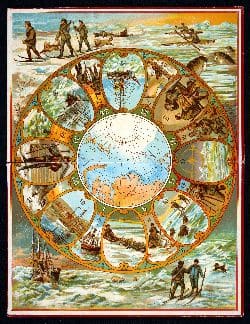
Nansen’s Voyage to the North Pole game board
S.C., Paris, circa 1900
Chromolithography on cardboard
MJV G372
In the late 19th century, the idea of conquering the Poles fascinated people and aroused keen interest.
Between 1893 and 1896, the Norwegian Fridtjof Nansen and his crew attempted to reach the North Pole aboard the Fram, by making use of the pack-ice drift created by the Arctic Ocean’s current.
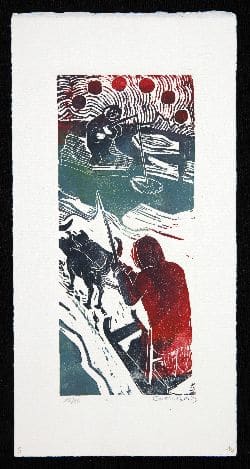
Françoise Bled-Godé
A Winter Amid the Ice
Twenty Thousand Leagues under the Sea
Linocuts, 1984
MJV C77 and C65
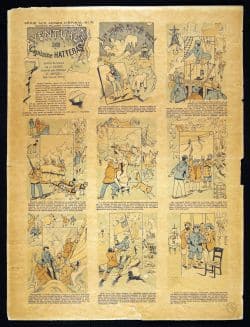
Adventures of Captain Hatteras
Imagerie Pellerin, Épinal, 1893
Stencil-coloured zincograph on paper
MJV C10
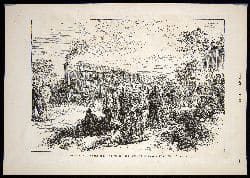
Inauguration of China’s first railway line (Shanghai-Kungwang line)
L’Univers Illustré, 1876
MJV I116
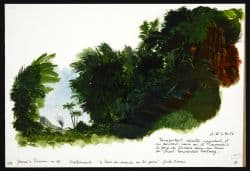
Jame’s Prunier
Around the World in Eighty Days
Gouache and watercolour on paper
Illustration for the Gallimard edition, 1995
MJV C354 (Purchased with the support of the Regional Acquisition Fund for Libraries, 2005)
Around the World in Eighty Days can be read as the record of a great shift, the moment when modernity seemed to be triumphing everywhere. The moment that signalled the advent of globalisation, heralding the mastery of distance and time.
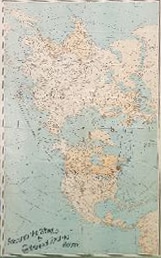
Around the World by the Canadian Pacific Route
Usher Monicall, Montreal, 1897
MJV D358
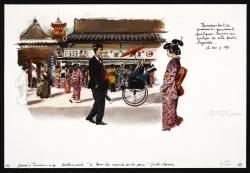
Jame’s Prunier
Around the World in Eighty Days
Gouache and watercolour on paper
Illustration for the Gallimard edition, 1995
MJV C354 (Purchased from the artist with the support of the Regional Acquisition Fund for Libraries, 2005)
Behind a work in line with 19th-century expectations hides a visionary novelist: the near future that Jules Verne describes page after page sometimes seems strangely like our present.
One of his intuitions led him to imagine a planet-wide society where travel by land, sea and air had become commonplace, at the origin of an initial inevitable globalisation. Regular railway and shipping lines crisscross continents and oceans, enclosing the globe in modernity.
Around the World in Eighty Days takes account of the emergence of new possibilities. Above all, it bears witness to the shift towards a globalised world.
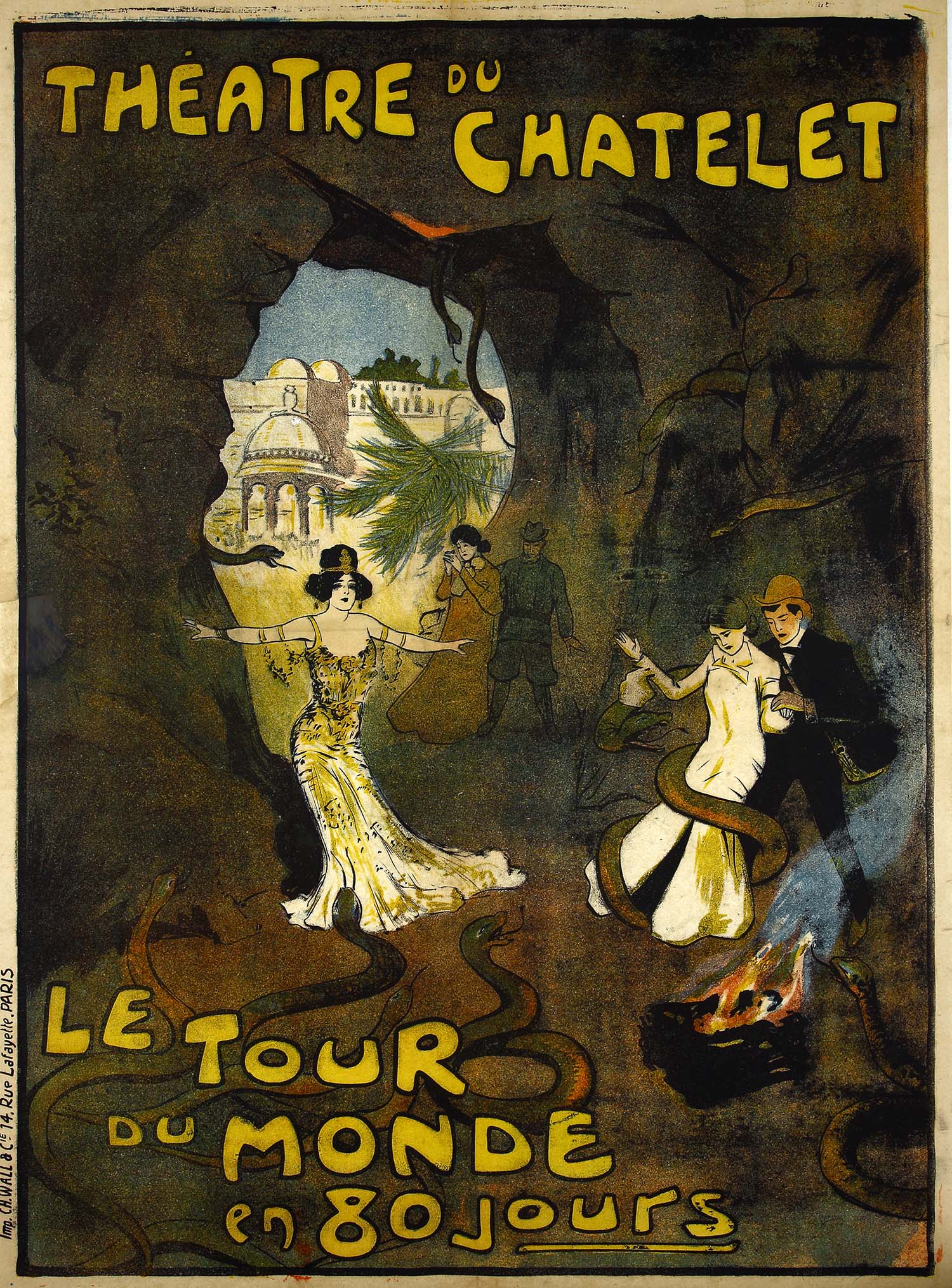
Around the World in 80 Days
The Cave of Snakes
Poster for the adaptation of the novel at the Théâtre du Châtelet
Ch. Wall & Cie Printers, Paris, 1900-1914
MJV D899 (Purchased with the support of the Fonds Régional d’Acquisition pour les Bibliothèques, 2017)
This spectacular play by Jules Verne and Adolphe d’Ennery was an adaptation in five acts and 15 tableaux. D’Ennery
introduced new characters and sensational new scenes including the cave of snakes in Borneo. This “fairy tale” owed its success to its uniquely spectacular sets and staging effects, including a passenger ship that sinks, a real elephant and an attack on a train by the Indians.
Its success continued unabated from November 1886 to May 1940, and the play was performed more than 3,000 times at the Théâtre du Châtelet.
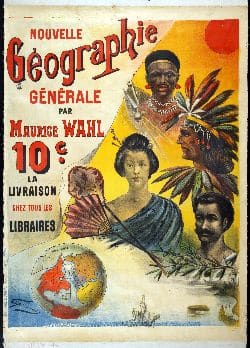
Promotional poster for the publication of New General Geography
Imprimerie Paul Dupont, Paris, 1899
MJV D1032
In the 19th century, explorations turned the world into a playground for adventures and discoveries that fascinated the Europeans.
Their stories and descriptions were reported in scientific works that opened windows onto societies from elsewhere and shaped the collective imagination.
An imagination nourished by stereotypical depictions, as in the portraits of Africans, Amerindians, Asians and Europeans illustrating this poster for the publication of New General Geography by Maurice Wahl.
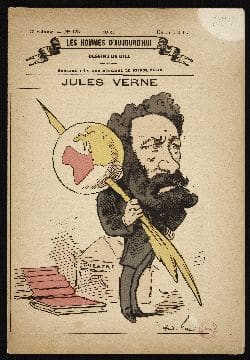
Caricature of Jules Verne by André Gill,
Les Hommes d’Aujourd’hui, circa 1880
MJV C22
This image of Jules Verne with a globe on his shoulder is open to several interpretations, the obvious one being the author’s taste for geography and exploration of the continents. More implicit, perhaps, is his interest in the world’s political challenges, which were multiplying before his eyes. Verne’s body of work, as André Gill illustrates, is a reflection of the world of the second half of the 19th century passed through the literary filter of his pen.
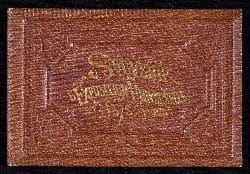
The Tour of the World
Official guide to and souvenir of the panorama presented
at the 1900 World’s Fair in Paris
MJV H734
Louis Glaser
Souvenir of the 1878 World’s Fair in Paris
Éditions Charles Feuth, Brussels, 1878
MJV G356
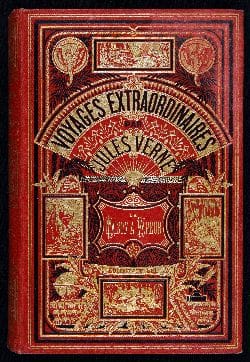
Jules Verne
The Steam House
Éditions Hetzel, Paris, 1880
MJV A2719
Lady Brassey
In India and Australia: Lady Brassey’s last voyage
Maison Alfred Mame et fils, 1893
MJV A5737
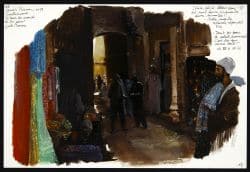
Jame’s Prunier
Around the World in Eighty Days
Gouache for the Gallimard edition, 1995
MJV C354 (Purchased with the support of the Regional Acquisition Fund for Libraries)
Jules Verne
Around the World in Eighty Days
Éditions Hetzel, Paris, 1874
MJV A18
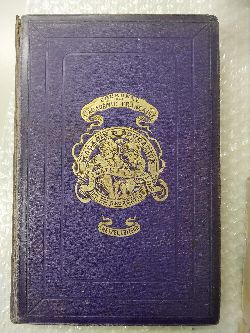
Magasin d’Éducation et de Récréation
47th volume (12 issues from January to June)
Éditions Hetzel, Paris, 1888
MJV A176
Serialised prepublication in the pages of the Magasin d’Éducation et de Récréation. A widely disseminated format that helped publicise the publishing house and enabled assessment of the novel’s popularity.
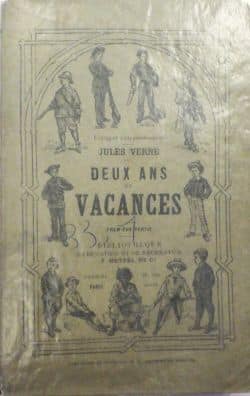
Jules Verne
Two Years’ Vacation
Éditions Hetzel, Paris, 1888
MJV A118 et A119
Publication in inexpensive paperback form without illustrations. with no illustrations. A volume that middle-class families could afford and intended for everyday use.
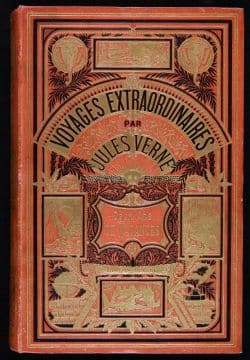
Jules Verne
Two Years’ Vacation
Cartonnage binding “with a fan and two elephants”
Éditions Hetzel, Paris, 1888-1889
MJV A332
Publication in a large-format deluxe edition with richly decorated and gilded cartonnage binding and illustrated pages. A valuable item targeting bourgeois and aristocratic customer; given to children as a Christmas present or school prize.
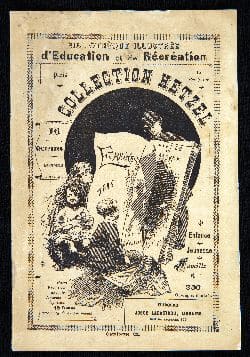
Catalogues of publications
Éditions Hetzel, Paris, 1866-1911
MJV H456
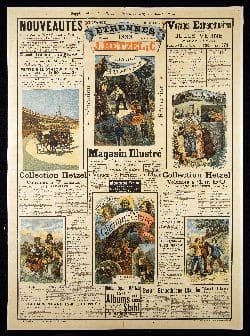
George Roux
Christmas Gift Book poster, 1888
J.Hetzel & Cie, Strasbourg, 1887
Lithograph
MJV D36
The sale of Christmas gift books was a major commercial event for Éditions Hetzel. It gave rise to the creation of advertising posters showcasing Jules Verne’s works in particular.
A clever layout incorporated blocks of text in which book titles are grouped by genre, series and age group, along with information on format, presentation and price. On the back, the publishing house provided an outline of its upcoming plans, with detailed notes on each of the year’s new titles. The posters were displayed on bookshops’ doors so that both sides could be read, providing readers with what was effectively a scaled-down catalogue.
Several models of posters were created each year. One of them was sometimes devoted to an especially important work or a leading author: Naturally enough, Jules Verne’s Extraordinary Voyages were treated to this sort of advertising.
